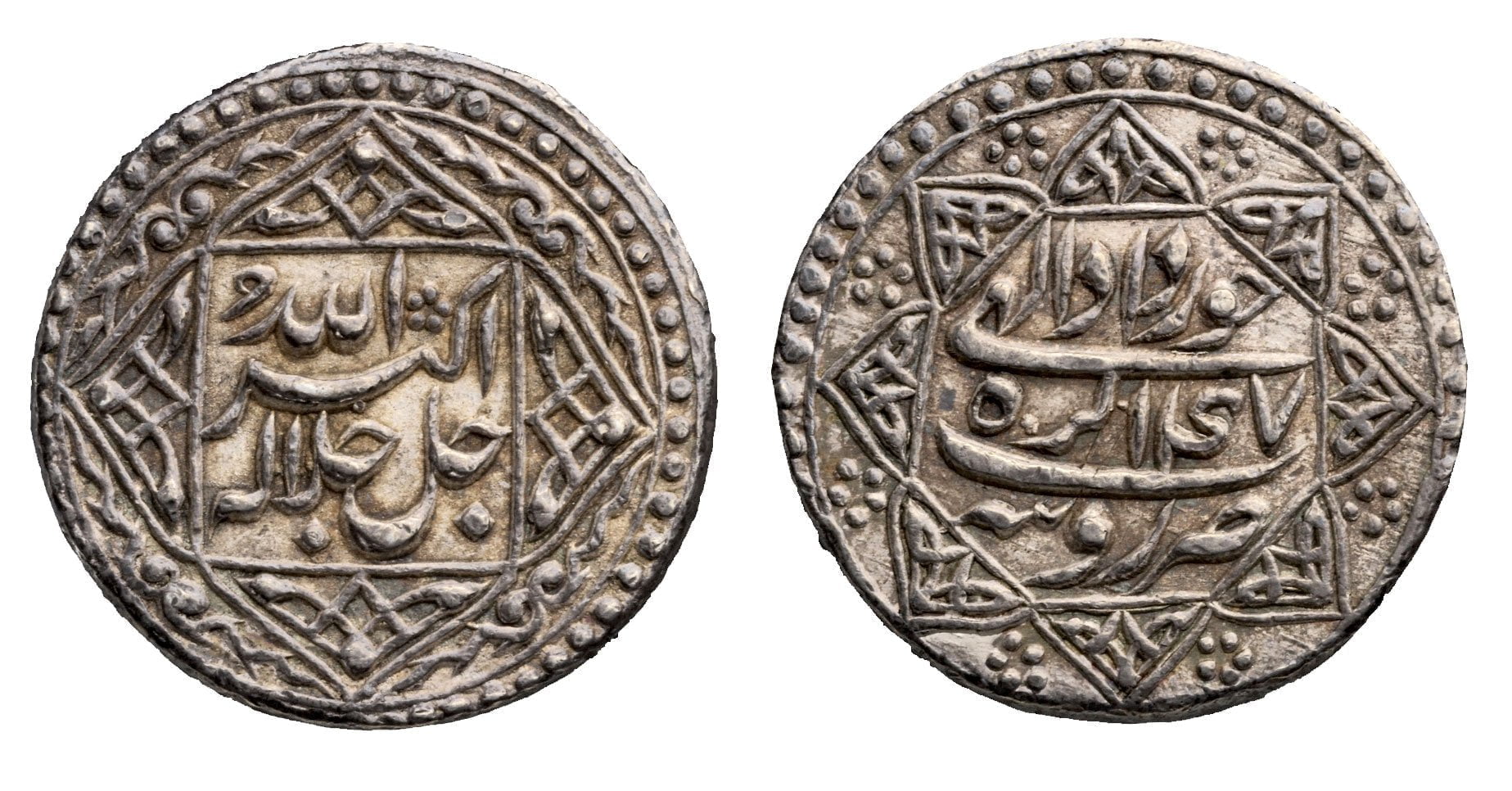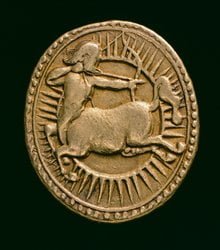MBC’s Andrea Potts spoke with researcher Shreya Gupta about uncovering the role of South Asian collectors in the formation of coin collections held in British museums and investigating Indian scholarly networks about Indian history.
Shreya is a doctoral researcher working on the AHRC funded Collaborative Doctoral Partnership project “Decolonizing Collections: Investigating Knowledge Formation Networks in Colonial India with special reference to numismatics” at the University of Exeter and the Ashmolean Museum. Shreya studied History at St Stephen’s College, University of Delhi. Subsequently, she earned her MA in South Asian History from SOAS, London in 2020.
Andrea: I’d love to hear about your research.
Shreya: I am doing a collaborative doctoral project between the Ashmolean Museum in Oxford and the University of Exeter. There are several coin collections spread across the Ashmolean, the Fitzwilliam Museum in Cambridge, and the British Museum, all of which are named after white European men who created these collections in South Asia. Most of them worked as colonial officials and that enabled them to collect coins in India which they deposited in UK museums. My project’s remit is to find out more about the role of Indian collectors, scholars, dealers, etc. in the formation of these coin collections. I also use the collecting process to understand knowledge formation networks in India. Colonial officials had this view that India did not have a written history and they started relying on material objects like coins, inscriptions, sculptures, and monuments to write a history for India. A lot of them therefore relied on coins in their scholarship.
“Colonial officials had this view that India did not have a written history”
A: What drew you to this project?
S: I did my MA degree at SOAS, London, in 2019-2020. Covid hit in the middle of that, so I went back home to India. After I graduated, I worked in the arts and heritage sector in India and I was pretty sure that I wanted to work on something that connected Indian history to wider audiences. I’ve always believed in the idea of accessibility. I then saw this PhD project being advertised and found it exciting because it linked to my own interests. I was particularly attracted by the fact that it was a collaborative project and I loved how it was examining the history of Indian history writing.
A: Could you tell me more about your research process? How are you uncovering information about the South Asians who contributed to the formation of these collections? What kind of archives are you using?
S: Firstly, I use museum records which are associated with the collections. For instance, I’ve been going to the British Museum’s Coins and Medals department which have their annual reports, minutes, and acquisition registers. So that gives me an insight into why this particular coin was collected at this particular moment or why they decided to acquire this collection. Was there a personal reason for acquiring it or was it more about scholarship? I also look at the collections themselves. The coins usually come with tickets which are placed right below the coins in coin trays. They usually have a registration and accession number and that can often give you an insight into where the coin has travelled over time.
Finally, I have undertaken archival research in India. I visited the Numismatic Society of India, which was founded in 1910 by two of the collectors that I’m researching and became a forum for those in India collecting coins and writing about them. Their archive gives you a sense of the issues that were being discussed and the nature of its membership. So this gave me a lot of information about who the Indian scholars were because they were very active in the society. I also visited the Indian Institute of Research in Numismatic Studies (now Indian Numismatic, Historical and Cultural Research Foundation) in western India, which has some great correspondence between these scholars. Through all of this, I was able to build up a sense of these Indian collectors.
A: Having gone to those different types of archives, do you feel that there were clear differences between them in the ways that the coins were being framed and how knowledge about India was being constructed?
S: Yes, I think so. At the British Museum, there was a lot of rhetoric about the need to construct a representative sample because it is national collection. At the Indian Institute, which was founded after the colonial period, the idea is to develop an understanding of the coins and what this suggests about a particular period of history.
A: When you did your archival research, did you feel that there were clear limits on how much they could tell you about the history of these collections, particularly when it comes to the South Asian contribution to them?
S: Absolutely. They are very formal in their approach and tone. Unless I have correspondence, it’s very difficult to understand why somebody collected these coins in the first place. One of the collectors – R.B. Whitehead – had five boxes of numismatic correspondence and letters stored at the Fitzwilliam, which gives me rare insight into why he was collecting and how he got interested in collecting coins in the first place. He came across coins by chance when he was posted in the Punjab. There were a lot of dealers in bazaars selling coins and he overheard a conversation in the market, became interested, and started collecting coins. It became a regular part of his life, and it was very much a product of where he was posted at that time because there was a long history of collecting coins in Punjab. These British men joined and developed networks in the Punjab to share information about the coins.
A: Could you speak a bit more about some of the Indian collectors that you’ve come across?
S: So some of the collectors are well known. Pandit Bhagwanlal Indraji not only donated coins but also inscriptions and sculptures to the British Museum. He was an avid coin collector. There were a lot of coin collectors who were based in western India. One of the European collectors – Dr Jose Gerson de Cunha – was stationed in western India and his helpers and network of scholars included a lot of Parsi collectors from Bombay. I’m still researching this, but the Parsi community was one of the most anglicised communities in India. They were also financially well off, perhaps one of the wealthiest classes in Bombay, which enabled them to collect coins. There were also scholars in central India, working in the 1940s and 1950s. So there are many different actors, with different motivations.
“Collecting coins and the scholarship around it was a collaborative process in which Indians played a crucial and active role.”
A: What’s the ultimate goal for your project?
S: To understand how collecting coins and the scholarship around it was a collaborative process in which Indians played a crucial and active role. There have been numerous studies that look at indigenous collaboration in the colonial context and a lot of scholars have written about the linkages between collaboration and colonial knowledge production. In my project I seek to show how Indian collectors were contributing to that discourse and were writing and producing their own version of Indian history. In some cases, they were collaborating with British officials, but they all had their own goals. It’s important to understand how these collections – that we say is ‘Whitehead’s collection’ for example – are actually connected to a lot of actors. And not only Indian scholars and collectors who were elites. Indian dealers in the Punjab were not elites but part of middle-class communities and they were constantly directly selling coins to the British Museum for a long period of time, from the 1870s at least. Most of the European collectors in the Punjab were buying from them. There are also many others who remain unnamed and unidentified who assisted European collectors, advising them and finding coins. People would find coins in the fields and sell them to dealers, so there is a longer chain of transmission to understand. It’s important to acknowledge that it’s not an individual enterprise, which we often understand colonial exploration to be.
“It’s important to acknowledge that it’s not an individual enterprise, which we often understand colonial exploration to be.”
A: How does this kind of research fit into the conversation around repatriation and restitution?
S: The coin collections that I am researching are not looted. Instead, it’s about European collectors relying heavily on Indian actors to collect them. It’s about expanding our knowledge of how collections were built to uncover hidden histories or marginalised histories and tell a better and fuller collecting history of these coins. Coins are not often discussed in restitution and repatriation debates, partly because of the sheer volume of coin collections in museums. I guess they don’t attract as much attention. As portable objects it was easy to sail back to Britain with them. Not all of these coins were just dug out from archaeological sites and taken back. They were already circulating within Indian markets and collectors bought them. So essentially, they were their personal collections.
“It’s about expanding our knowledge of how collections were built to uncover hidden histories or marginalised histories.”
A: So perhaps coin collections are a good type of object to focus this kind of research around as they aren’t as connected to those conversations. They enable a different kind of approach?
S: Yes, I think that’s something that you’ve picked up on really nicely. I get asked the question all the time, why coins? And central to the answer is that they were portable objects that formed part of these scholarly networks. They were so important for people to write about India’s history and people. Colonial collectors became very interested and it was easy for them to take them back home to study.
A: The formal title of your project is ‘Decolonising collections. Uncovering the role of Indians in coin collecting in colonial India.’ And also – it’s quite long! – ‘Investigating knowledge formation networks in colonial India’. How for you does this project relate to the idea of decolonising?
S: I think the important context here is museums in the UK. It’s about trying to bring the voices of Indian collectors, scholars, and dealers to museums in the UK and expanding their histories. Making their histories more representative of the collecting process. In addition, the project seeks to understand the various power dynamics at play here, not only between European collectors and Indian collectors, but between Indian collectors. This work can help us to understand how the colonial context influenced collecting. For example, how colonial officials had certain advantages as collectors. They were able to collect coins because of their position in the Indian Civil Service, which meant that they were posted to various regions. And as a direct result of their posting, they were able to collect particular kinds of coins and develop contacts among other civil servants and military officers. This is the context in which they were able to exchange coins and produce scholarship about India.
A: I like how it’s got those two elements. In one sense, making the colonial context very clear and also broadening what we understand by that through looking at South Asian collectors.
S: Yes. It does mean that I have to do twice as much research!

